With high fertiliser costs and an ever-increasing scrutiny placed on agricultural inputs, the precision application of fertiliser remains an important topic. Nitrogen (N) sensing technology has been around for some years now, but are we at the stage yet where drones and robots can decide where to place our N? We spoke to Richie Hackett, research officer with Teagasc, to discuss some of the research work he was involved in looking at the use of sensors to determine crop N management.
The work carried out in Oak Park using N sensing technology started in 2012.
It focused on a number of aspects including determining whether the sensors could accurately give an indication of how much N was in the crop, which would help determine how much more the crop needed.
Another aspect focused on was whether the sensors could be used to accurately measure protein levels in a malting barley crop.
How do N sensors work?
The researchers didn’t use commercially available tractor-mounted N sensors for this work, but the principles are the same. They instead used a handheld Crop Circle ACS 470 device which takes a reading every five every seconds.
The sensor measures light reflectance from the crop. Light consists of around six basic colours (red, orange, yellow, green, blue and violet). Red and blue light is generally absorbed by the crop but green light is reflected, giving crops their green colour. When N levels are high in the crop, red and blue light absorption rates increase as there is more chlorophyll present in the crop. The higher levels of this light absorbed by the crop, the more green light is reflected.
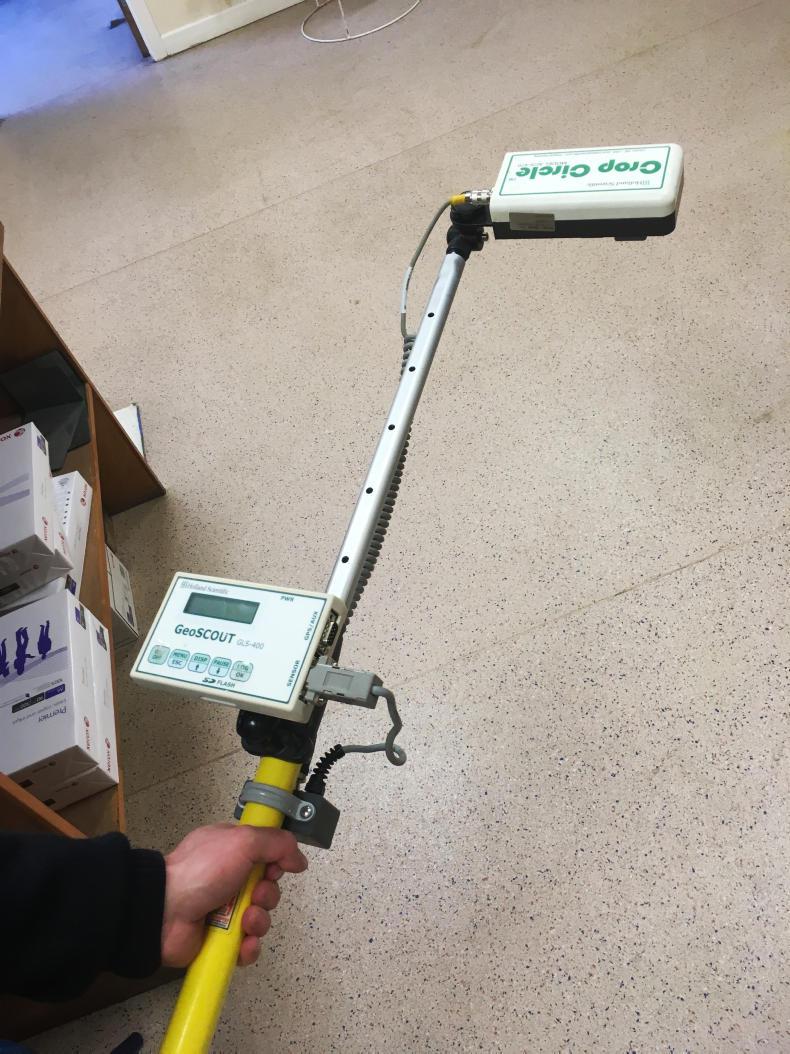
The handheld N sensor used by Richie.
The sensors can detect the levels of light which are being reflected from the crop. Data collected from the sensors is used to generate NDVI vegetation index maps, which are used to guide N applications.
The sensors used by Richie’s handheld device detect three different types of light – near infrared light (around 780nm), red edge light (around 730nm) and green light (550nm). Red edge light in particular is very sensitive to the amount of N in the crop and is often used in commercial sensors.
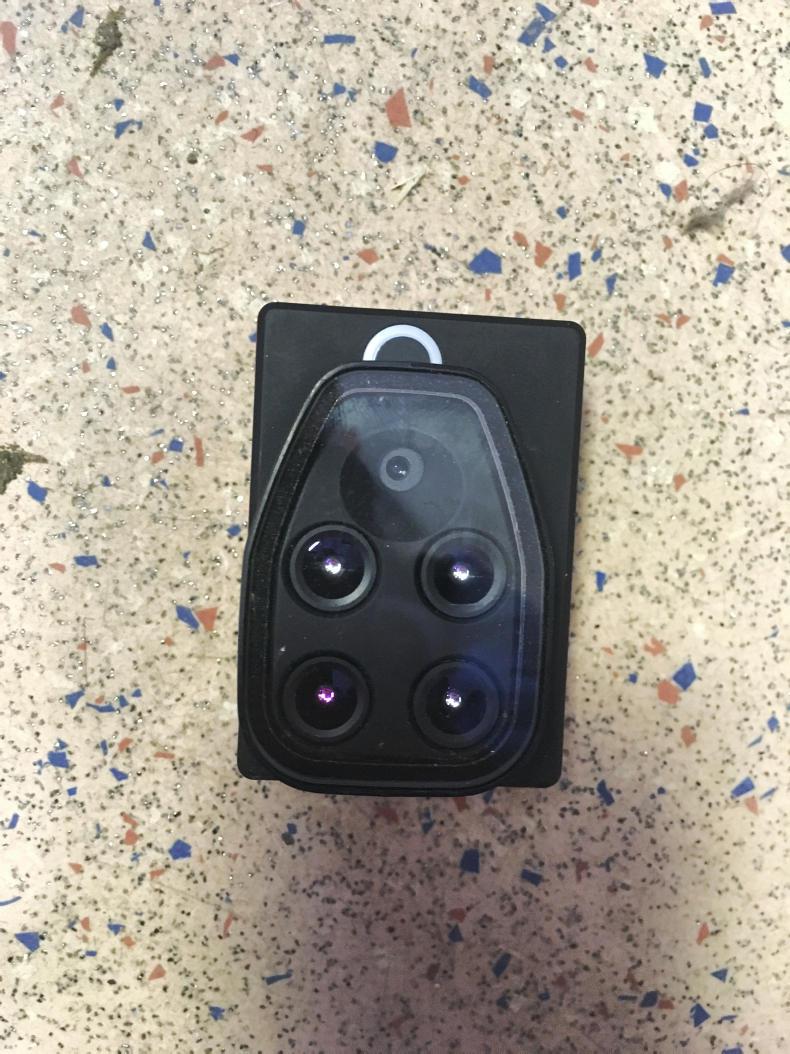
A N sensor for a drone.
Active or passive
Richie explains there are two types of sensors – active and passive. Active sensors send out their own light which bounces back from the crop. These sensors are often used on commercial devices but not on drones as a powerful light source is required. These can also be used at night.
Passive sensors rely on the sunlight and can’t be used at night. They are typically attached to drones as they are lighter. There are a number of problems with passive sensors, however. For example, the angle of the light coming off the sun can affect their readings. Variable cloud cover can also affect this.
Sensors have their place
As part of the work, the researchers took plant samples and analysed them in the laboratory to determine N levels. They then compared these to the readings of the handheld sensor.
This was to determine the relationship between the sensor readings and the actual N levels in the crop. When taking just one set of readings at a single growth stage, correlations were high, around 70%. This would be accurate enough to help guide N decisions.
The problem was that when they expanded the readings to different growth stages from the same plant, this correlation decreased. It was found that the correlation is dependent on the growth stage of the crop.
This means that if a calibration were to be developed, a different calibration may be needed for different growth stages. The data also varied on site and seasons, so coming up with an average calibration was difficult.
While the readings were accurate at a single growth stage, they were not accurate enough to make a final management decision to guide fertiliser rates
Richie also explained there were difficulties in distinguishing between whether the crop had actually used the fertiliser or whether the crop had run out and required more as the sensors didn’t give any information about the amount of N in the soil.
For that reason, the researchers found that sensors were best placed for using before the third split of N. At this stage, the crop is growing rapidly and the likelihood of chemical N remaining in the soil is lower. The N sensor can help guide the application rates for the final split.
They were able to see a reasonable correlation between N levels in the crop at the time of heading out and protein levels at harvest time. While the readings were accurate at a single growth stage, they were not accurate enough to make a final management decision to guide fertiliser rates. The results also varied depending on site and seasons.
Future of sensors
Commercially available sensors used in Ireland generally tend to be used to balance crop N applications and help even out the variability that occurs when using organic manures.
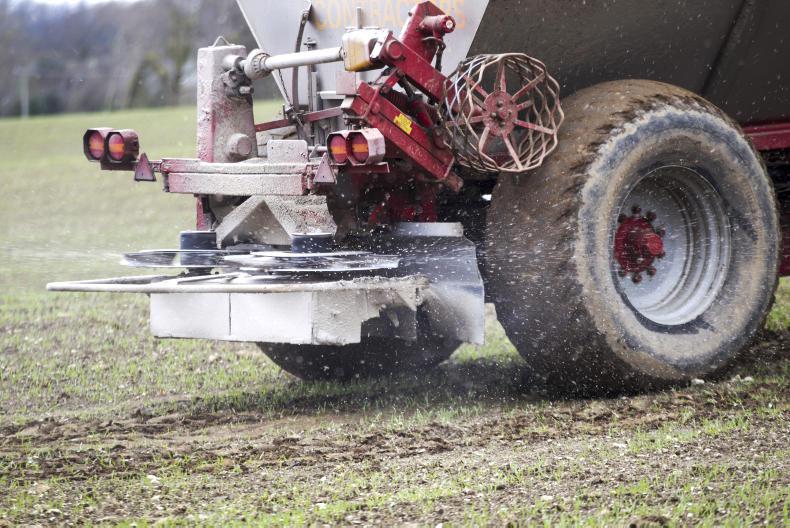
Exisitng N sensing technology can be used to help balance N applications when using organic manures.
While developing sensors which are capable of determining a crop N requirement without any preset parameters is technically possible, there are a number of logistical and technological challenges to overcome first. This technology will most likely be used in conjunction with new technology yet to be made available such as soil N sensors.
With high fertiliser costs and an ever-increasing scrutiny placed on agricultural inputs, the precision application of fertiliser remains an important topic. Nitrogen (N) sensing technology has been around for some years now, but are we at the stage yet where drones and robots can decide where to place our N? We spoke to Richie Hackett, research officer with Teagasc, to discuss some of the research work he was involved in looking at the use of sensors to determine crop N management.
The work carried out in Oak Park using N sensing technology started in 2012.
It focused on a number of aspects including determining whether the sensors could accurately give an indication of how much N was in the crop, which would help determine how much more the crop needed.
Another aspect focused on was whether the sensors could be used to accurately measure protein levels in a malting barley crop.
How do N sensors work?
The researchers didn’t use commercially available tractor-mounted N sensors for this work, but the principles are the same. They instead used a handheld Crop Circle ACS 470 device which takes a reading every five every seconds.
The sensor measures light reflectance from the crop. Light consists of around six basic colours (red, orange, yellow, green, blue and violet). Red and blue light is generally absorbed by the crop but green light is reflected, giving crops their green colour. When N levels are high in the crop, red and blue light absorption rates increase as there is more chlorophyll present in the crop. The higher levels of this light absorbed by the crop, the more green light is reflected.

The handheld N sensor used by Richie.
The sensors can detect the levels of light which are being reflected from the crop. Data collected from the sensors is used to generate NDVI vegetation index maps, which are used to guide N applications.
The sensors used by Richie’s handheld device detect three different types of light – near infrared light (around 780nm), red edge light (around 730nm) and green light (550nm). Red edge light in particular is very sensitive to the amount of N in the crop and is often used in commercial sensors.

A N sensor for a drone.
Active or passive
Richie explains there are two types of sensors – active and passive. Active sensors send out their own light which bounces back from the crop. These sensors are often used on commercial devices but not on drones as a powerful light source is required. These can also be used at night.
Passive sensors rely on the sunlight and can’t be used at night. They are typically attached to drones as they are lighter. There are a number of problems with passive sensors, however. For example, the angle of the light coming off the sun can affect their readings. Variable cloud cover can also affect this.
Sensors have their place
As part of the work, the researchers took plant samples and analysed them in the laboratory to determine N levels. They then compared these to the readings of the handheld sensor.
This was to determine the relationship between the sensor readings and the actual N levels in the crop. When taking just one set of readings at a single growth stage, correlations were high, around 70%. This would be accurate enough to help guide N decisions.
The problem was that when they expanded the readings to different growth stages from the same plant, this correlation decreased. It was found that the correlation is dependent on the growth stage of the crop.
This means that if a calibration were to be developed, a different calibration may be needed for different growth stages. The data also varied on site and seasons, so coming up with an average calibration was difficult.
While the readings were accurate at a single growth stage, they were not accurate enough to make a final management decision to guide fertiliser rates
Richie also explained there were difficulties in distinguishing between whether the crop had actually used the fertiliser or whether the crop had run out and required more as the sensors didn’t give any information about the amount of N in the soil.
For that reason, the researchers found that sensors were best placed for using before the third split of N. At this stage, the crop is growing rapidly and the likelihood of chemical N remaining in the soil is lower. The N sensor can help guide the application rates for the final split.
They were able to see a reasonable correlation between N levels in the crop at the time of heading out and protein levels at harvest time. While the readings were accurate at a single growth stage, they were not accurate enough to make a final management decision to guide fertiliser rates. The results also varied depending on site and seasons.
Future of sensors
Commercially available sensors used in Ireland generally tend to be used to balance crop N applications and help even out the variability that occurs when using organic manures.

Exisitng N sensing technology can be used to help balance N applications when using organic manures.
While developing sensors which are capable of determining a crop N requirement without any preset parameters is technically possible, there are a number of logistical and technological challenges to overcome first. This technology will most likely be used in conjunction with new technology yet to be made available such as soil N sensors.




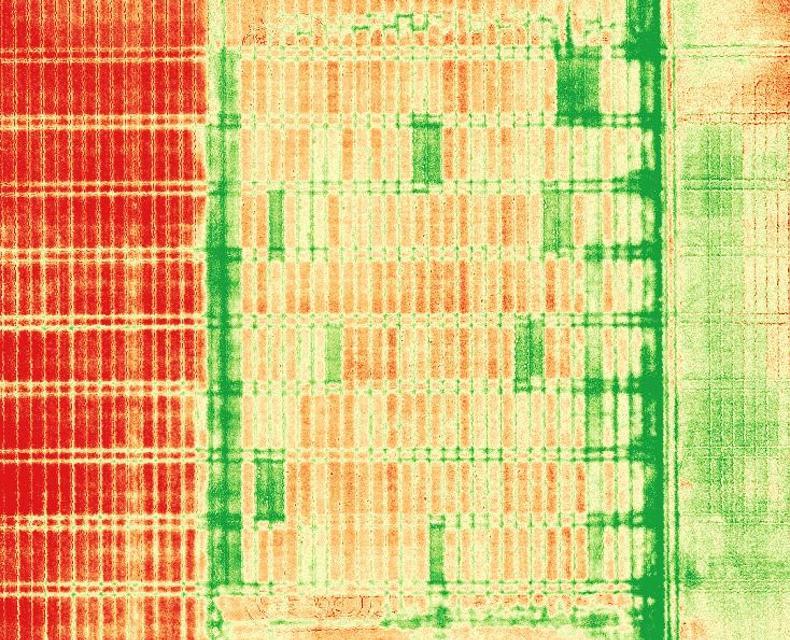




 This is a subscriber-only article
This is a subscriber-only article







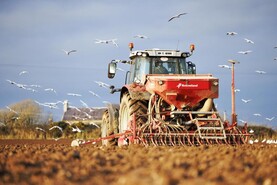


SHARING OPTIONS: